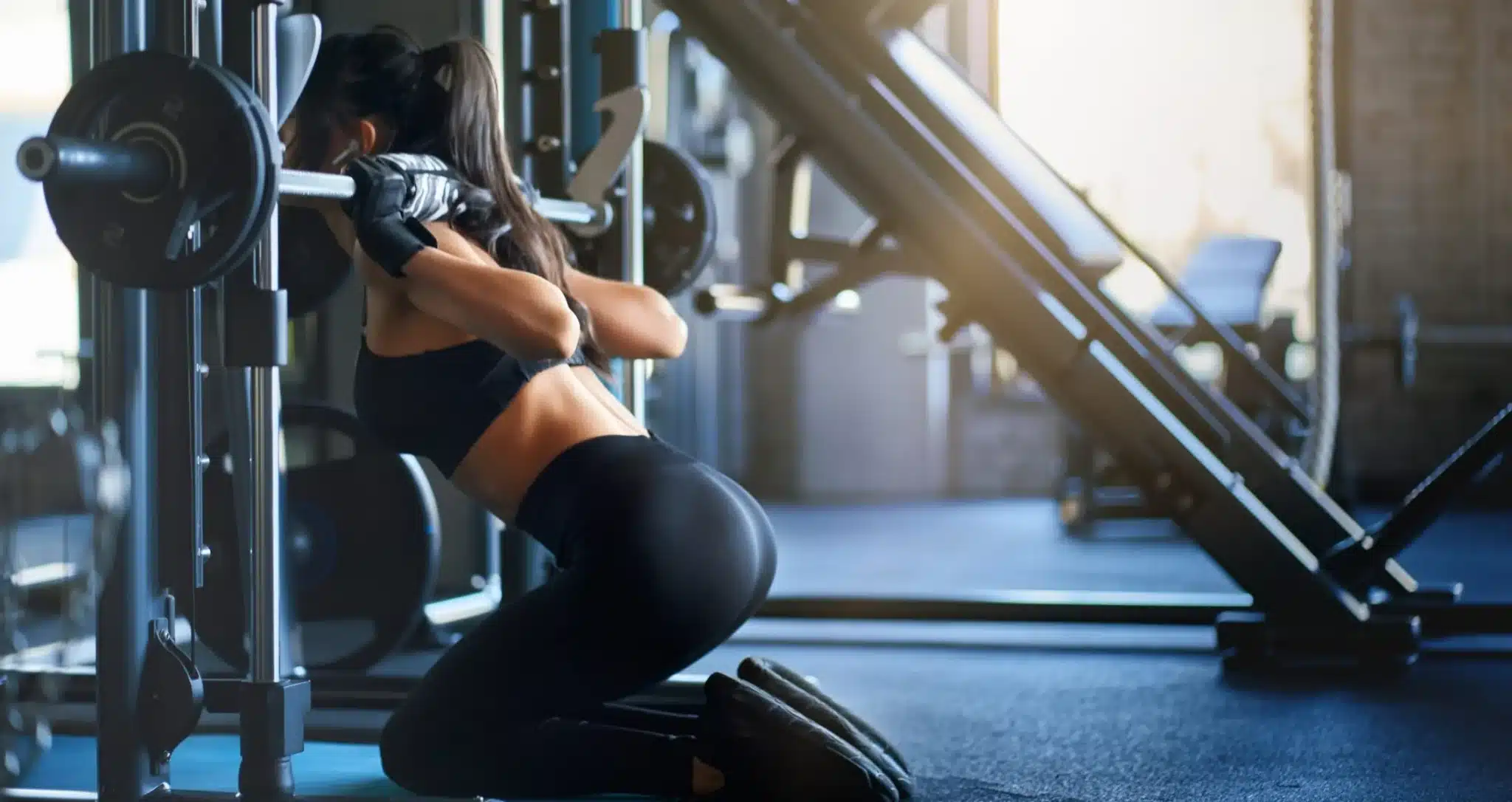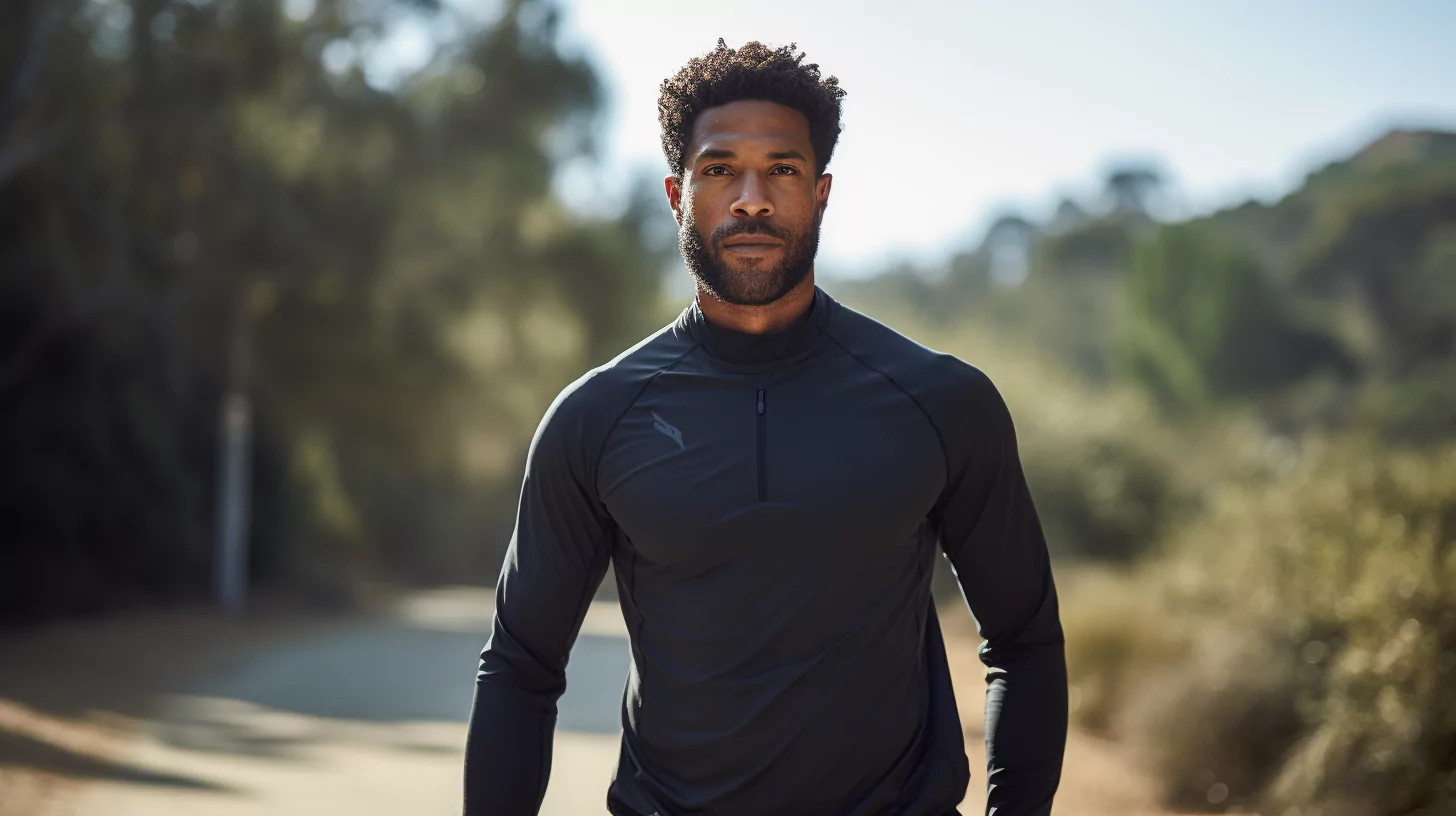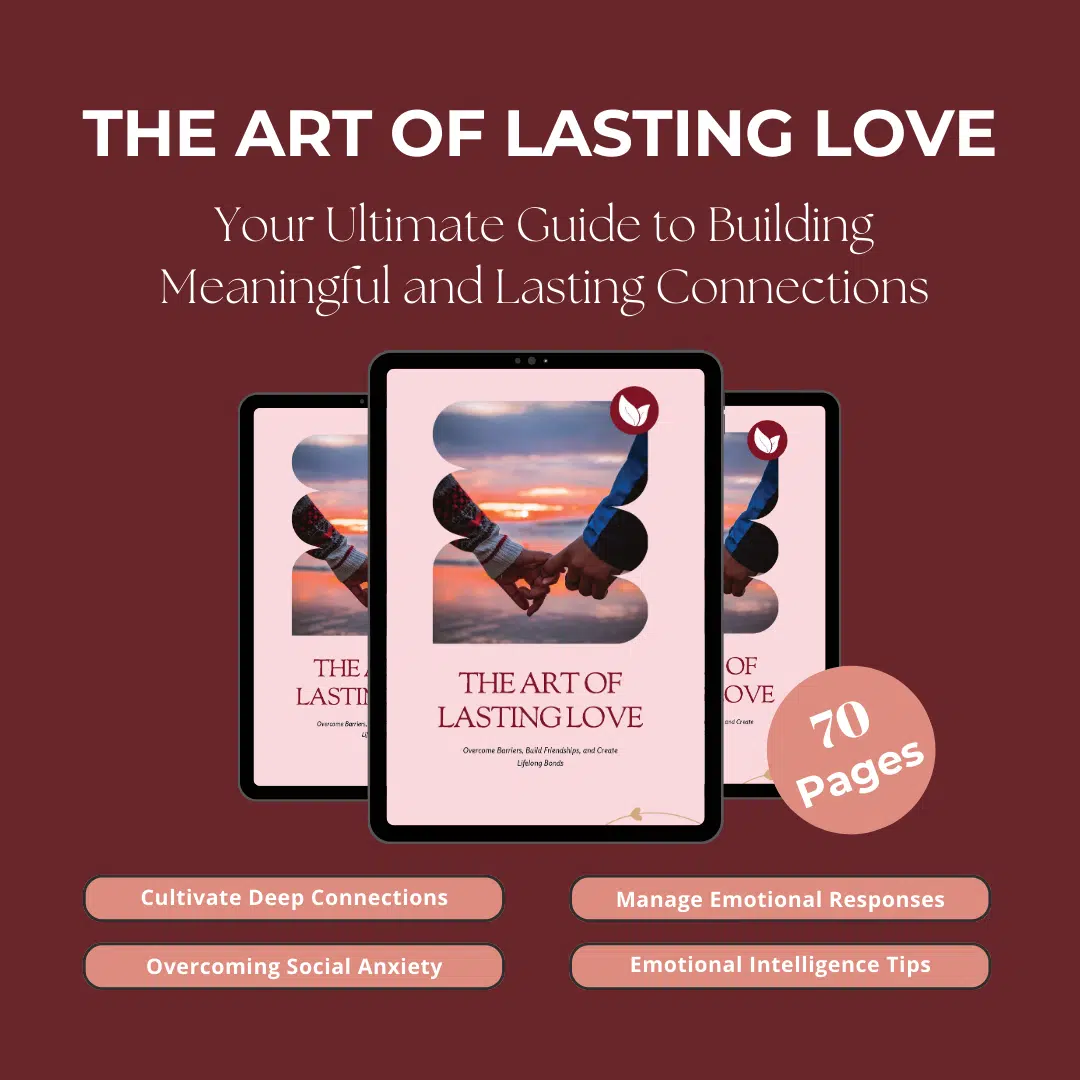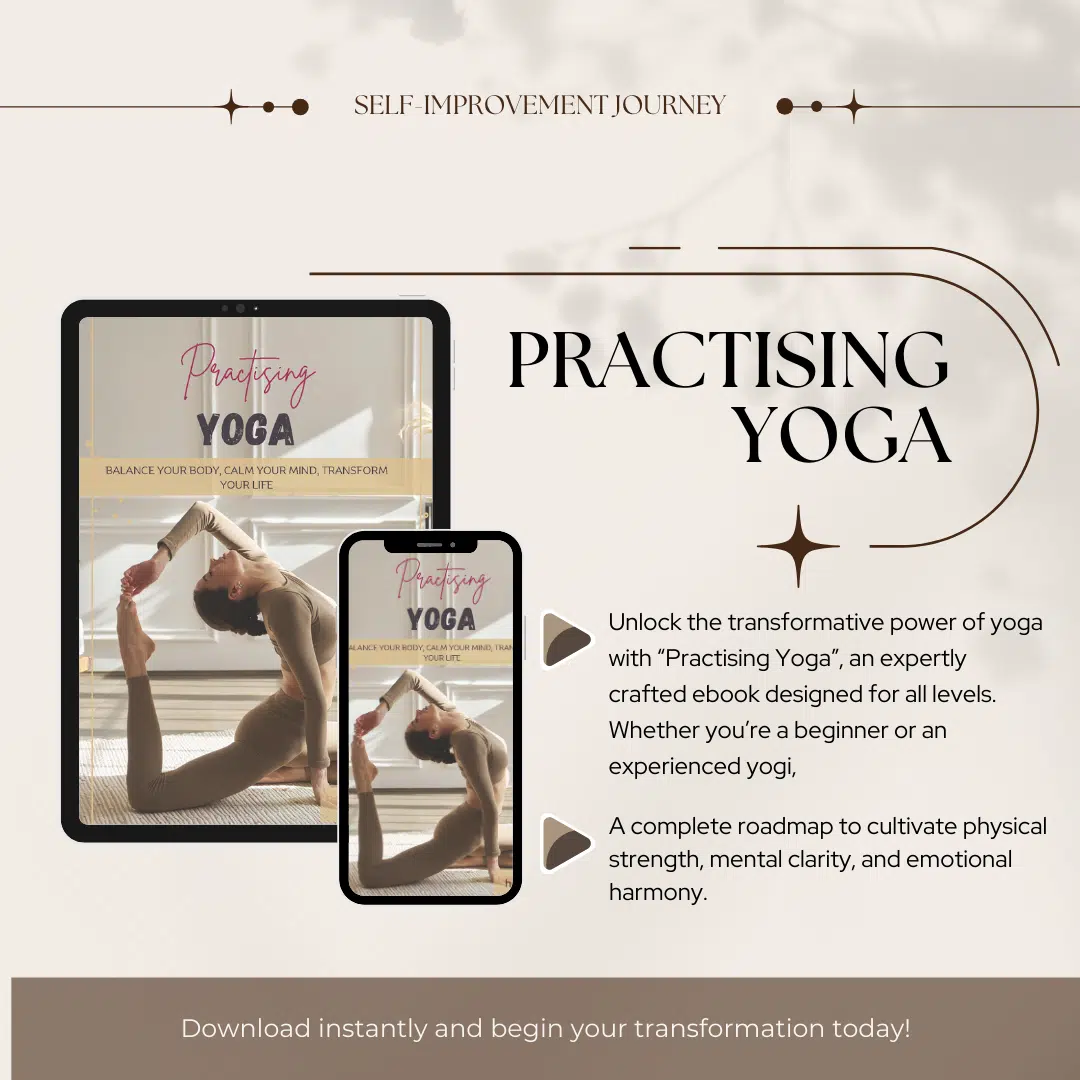Whether you’re a seasoned cross-fitter, a casual gym-goer, or someone who spends long hours at a desk, you’ve likely experienced the discomfort of a sore, stiff neck after an intense workout or long day at the office. This tension is often caused by overusing or straining the muscles in the neck or shoulders, resulting in what’s commonly referred to as muscle knots in neck, also known as trigger points. These painful, tight spots can feel like a “knot” or lump when you touch them and may trigger pain when you move your arm, neck, or shoulders.
What causes muscle knots? These trigger points develop from muscle overuse, stress, or poor posture, and can lead to discomfort that worsens over time. Left untreated, a knot in neck muscle can limit your range of motion, causing stiffness and reduced mobility in the head, shoulders, and upper back. If you’re wondering how to get rid of muscle knots in neck, there are several effective techniques for relieving these tight spots and preventing them from recurring.
In this guide, we’ll explore the most effective ways to treat these painful muscle knots, focusing on muscles in the back of the head, neck, and upper back. Discover helpful tips, stretches, and treatments to alleviate tension and restore comfort to your everyday life.
What is a Muscle Knot?
Muscle knots, also known as trigger points, are adhesions that form in the fascia or connective tissue between muscles. These knots can develop anywhere in the body but are most commonly found in the neck, thighs, buttocks, and shoulders, particularly in the trapezius muscle knot region. They often form due to repetitive stress or overuse of specific muscles.
While knot in neck muscles and other areas don’t cause permanent damage, they can make it more painful and difficult to move, especially when located in sensitive areas like the muscles in the back of the head or shoulders. Left untreated, these trigger points can worsen over time, leading to chronic discomfort and restricted mobility.
What Causes Muscle Knots? In Neck?
1-Incorrect Neck Alignment
Incorrect alignment in the neck is a common cause of muscle disorders such as muscle knots. When neck muscles are chronically shortened or pulled into an unnatural position due to bad posture, it can lead to a stiff neck and the formation of painful knots, often referred to as kinks in the neck. This tension creates tight spots on the back of the neck, which can be difficult to alleviate without proper treatment.
Furthermore, poor alignment can cause the neck vertebrae to become misaligned, increasing the strain on surrounding muscles. This can result in entangled neck muscles, contributing to ongoing discomfort and a limited range of motion. To prevent or relieve these muscle knots, addressing posture and ensuring correct neck alignment are crucial.
2-Muscle Weakness
Muscle weakness can lead to neck muscle knots because it affects the strength and function of neck muscles. Weak neck muscles can’t generate enough force to support the head and neck properly, which can cause the head and neck to rotate or tilt forward. This can cause pain and discomfort and eventually lead to neck muscle knots.
3-Poor Posture
Sleeping in a crooked position can put pressure on the cervical spine, which can cause a knot on the side of the neck. This tension can lead to knots in the neck at the base of the skull, and eventually, it causes pain and stiffness, which leads to repetitive strain injuries (RSIs). In an RSI, the muscle becomes inflamed and sore. This can lead to pain and restricted movement.
Poor sleeping habit is also another cause of neck muscle knots. When you are sleep-deprived, your body’s hormones are thrown off balance. This can cause tension in your muscles, which can lead to neck muscle knots.
4-Overuse of the Neck Muscles
The overuse of the neck muscles can cause knots in the neck. In this way, the neck muscles become too tight and knot together, causing difficulty moving the neck and head.
Neck muscle knot popping is most common in people who work at a computer for long periods or are involved in activities requiring a lot of neck movements, such as tennis or golf.
5-Chronic Tension or Inflammation
Chronic tension creates repetitive stress on the neck muscles and can cause a knot in the upper neck. This can lead to irritation and inflammation in the muscles.
6-Repetitive Microtrauma
Repetitive microtrauma to the neck muscles can cause a painful knot in the upper neck. This microtrauma causes the muscle fibers to shorten and bunch together, creating a knot.
7-Cervical Spondylosis
Age-related wear and tear in the cervical spine (neck), known as cervical spondylosis, can cause neck pain leading to neck kink. Neck pain that never goes away muscles cramping, making a grinding, clicking, or popping noise when you move your neck.
This wear and strain can result in neck pain and headaches since the cervical spine governs how your head moves. These signs may indicate cervical spondylosis, a degenerative vertebrae condition that develops when the neck is unused.
8-Medical Variations
- Intervertebral disc (IVD) pain is a common problem that can occur anywhere along the IVD. The most common location is the neck of the disc, which is where the pain is most severe.
- This pain is typically caused by a herniation of the nucleus pulposus, the jelly-like material that makes up the disc’s interior. When this material herniates, it causes intense pain in the neck.
- Neck facet joints are ball-and-socket joints that allow movement in three axes. Muscle knots can develop at these joints due to repetitive use, tension, or overuse. They can cause pain, stiffness, and a limited range of motion. Treatment typically involves stretching and massage.
How To Get Rid Of Muscle Knots–Seven Proven Treatments for Stiff Neck Causes
In this section, we’ll guide you on effectively getting a knot out of your neck. Discover practical techniques and helpful tips to alleviate discomfort and restore flexibility, ensuring a smoother and more comfortable experience. Say goodbye to neck muscle knots with our easy-to-follow methods.
1. Stretching

To know how to release trigger points in the neck, it is worth noting that stretching is a key part of any healthy lifestyle. It can be done through exercises like yoga or Pilates and activities like walking or swimming. The best type of stretching for neck muscle knots is slow and gentle, which helps avoid injury. It’s also important to warm up before stretching to prevent injury.
Studies show daily neck stretches can slash knot frequency and severity by a whopping 50% (American Journal of Physical Medicine & Rehabilitation, 2018). Not only that, but stretching boosts mobility and posture, further shielding you from future tension headaches.
Focus on gentle, static stretches: Hold for 30-60 seconds, sans bouncing or strain.
Target key areas: Chin tucks for the front, side tilts for the sides, and slow rotations to loosen everything up.
Pain-free is key: Stop if you feel any sharp pangs and consult a healthcare professional.
Make it Easy: Aim for 5-10 minutes of daily stretches, or incorporate them into your routine.
2. Cold or Heat Therapy

The tense muscles in the neck or knots are painful and annoying, but you can do a few things to help reduce the pain. The first thing to try is heat or ice treatment. If the muscles around the neck are tense and tight, the blood flow can’t be as good, making the knots worse.
Warm yourself with a heating pad or towel for 5-10 minutes before working out, and use an ice pack for 15 minutes after your workout.
Try both heat and cold to see which makes you feel better before deciding on a specific treatment. Use heat or ice for no more than 20 minutes several times daily to test which is more effective.
A study published in the Official Journal of the Society for Academic Emergency Medicine concluded that Inflamed muscle tissue resulting from an acute strain receives a mild pain reduction if the victim is first treated with a 30-minute heat pad or cold pack.
3. Trigger Point Massage Therapy
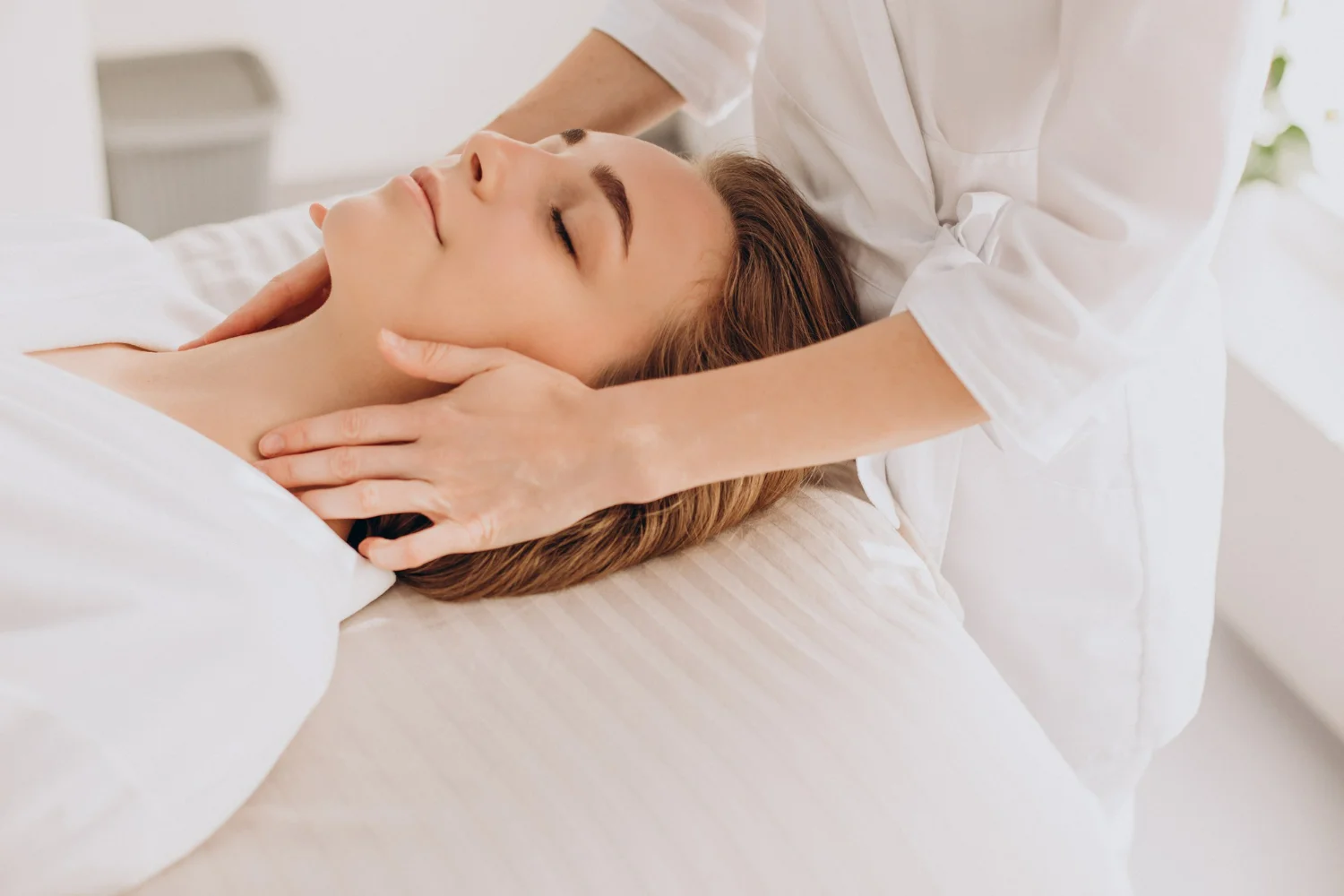
Trigger point massage therapy is a highly effective treatment for knotted neck muscles. This hands-on technique involves applying targeted pressure and finger strokes to release the trigger points causing pain and dysfunction in the neck muscles. By focusing directly on the knots, trigger point massage therapy can quickly alleviate neck pain and restore mobility.
In addition to massage therapy, incorporating posture exercises can help prevent the recurrence of muscle knots. Learning how to fix posture is key to maintaining proper alignment and reducing the strain on your neck muscles, which can ultimately prevent further discomfort. Strengthening and stretching exercises that target posture can complement the benefits of massage therapy, ensuring long-term relief from muscle knots.
Stretching and strengthening muscles are the focuses of therapy, which you can perform at home or need the assistance of a physical therapist at a clinic. Your health coach will determine how long and often you should perform these exercises based on your condition and symptoms.
4. Acupuncture Treatment

Acupuncture treats neck muscle knots by relaxing tight muscles and stimulating energy flow. The insertion of thin needles (dry needling) into specific points on the body can unclog blocked energy.
Additionally, acupuncture practitioners have found that it can reduce pain and improve blood circulation in the neck area. This reduces pressure on the discs and vertebrae, decreasing pain and stiffness.
This treatment also helps to relieve stress and relax tense muscles. In addition, acupuncture can help reinvigorate the body, stimulate digestion, and promote well-being. For these reasons, many seek this treatment option for neck muscle knot relief.
5. Yoga Poses for Neck Muscle Knots
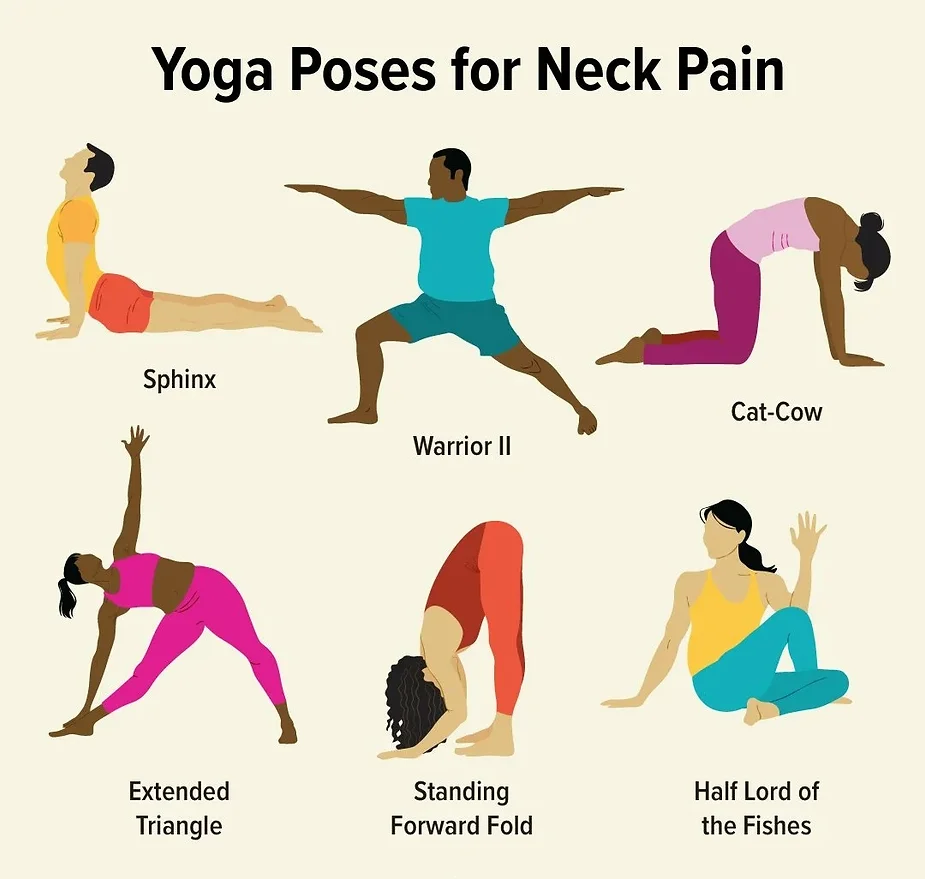
Yoga is an excellent way to relieve stress and enhance your overall well-being, but it’s also a powerful method for alleviating neck stiffness and muscle knots in the neck. By incorporating yoga into your routine, you can effectively release tension in your muscles, helping to reduce pain and stiffness that often develop from poor posture or overuse.
Specific yoga poses targeting the neck muscles, like the head-tilt pose (also known as the “chin-up”), can significantly improve blood circulation and ease neck pain. Additionally, yoga helps relieve tension in other critical areas like the shoulders, back, and hamstrings, promoting full-body relaxation and mobility.
To maximize the benefits of yoga for treating neck muscle knots, follow these four tips:
- Make sure you’re comfortable with each pose before deepening into it.
- Focus on deep, controlled breathing throughout the sequence.
- Utilize props to make challenging poses more accessible and avoid strain.
- Take breaks when necessary to avoid overexertion and maintain proper form.
Incorporating yoga into your routine can improve posture, prevent muscle knots, and enhance overall flexibility.
6. Oral Medications
A healthcare provider may recommend a prescription or over-the-counter anti-inflammatory drugs like pain killers or muscle relaxants if you are in pain. In addition to Oral Medication, it is important to find out the root cause of pain so that effective and safe home remedies can be tried.
7. Soft Collar or Brace
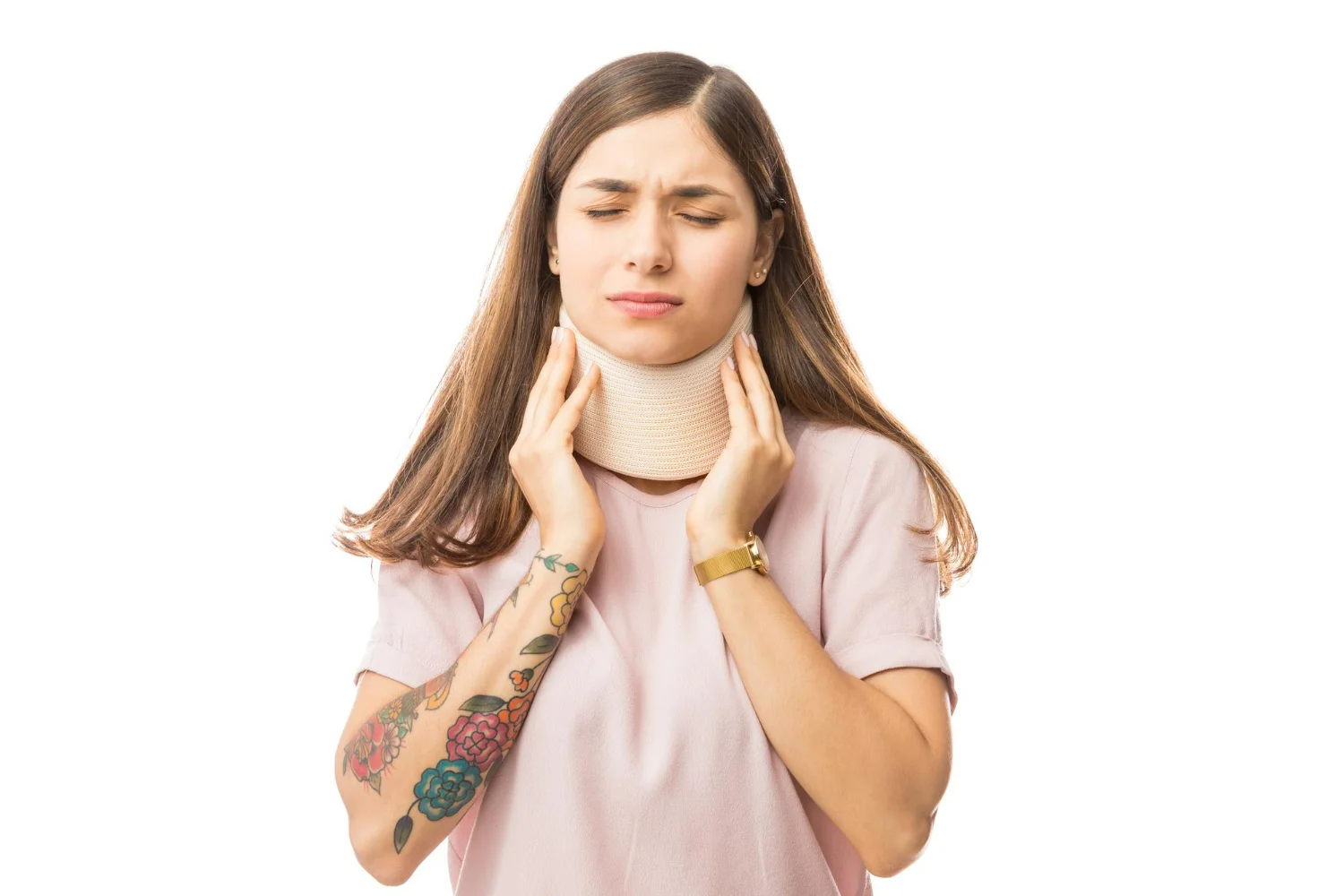
Wearing a soft collar or brace for neck muscle knots has many benefits. Some of the benefits include:
- Increased Range of Motion: A soft collar or brace can help increase the range of motion in your neck muscles. This can help improve your flexibility and reduce tension in your neck muscles.
- Reduced Pain: Wearing a soft collar or brace can help reduce the pain you experience in your neck muscles. This can help you continue working out or participating in activities you enjoy without experiencing pain.
- Improved Performance: Wearing a soft collar or brace can help improve your performance in gardening, Pilates, and weightlifting activities. This is because wearing a soft collar or brace can help reduce tension in your neck muscles, allowing you to perform more repetitions with less effort.
Conclusion
Neck muscle knots are not just uncomfortable—they can significantly hinder your mobility and quality of life if left untreated. If not addressed promptly, these muscle knots in the neck can worsen, leading to increased pain and stiffness. To effectively treat them, try gentle neck stretches, apply a warm compress, and, if necessary, use over-the-counter pain relievers for quick relief.
In conclusion, you now have seven proven strategies to tackle neck stiffness and those painful knots in your neck. From targeted stretches and trigger point massage to heat therapy and posture awareness, you’re equipped with a comprehensive approach to ease tension and restore comfort.
The key to lasting relief is consistency. By incorporating these techniques into your routine, you can prevent future neck muscle knots and maintain a pain-free posture. Ready to take control? Share your favorite methods in the comments, and let’s build a supportive community of #KnotSmashers



